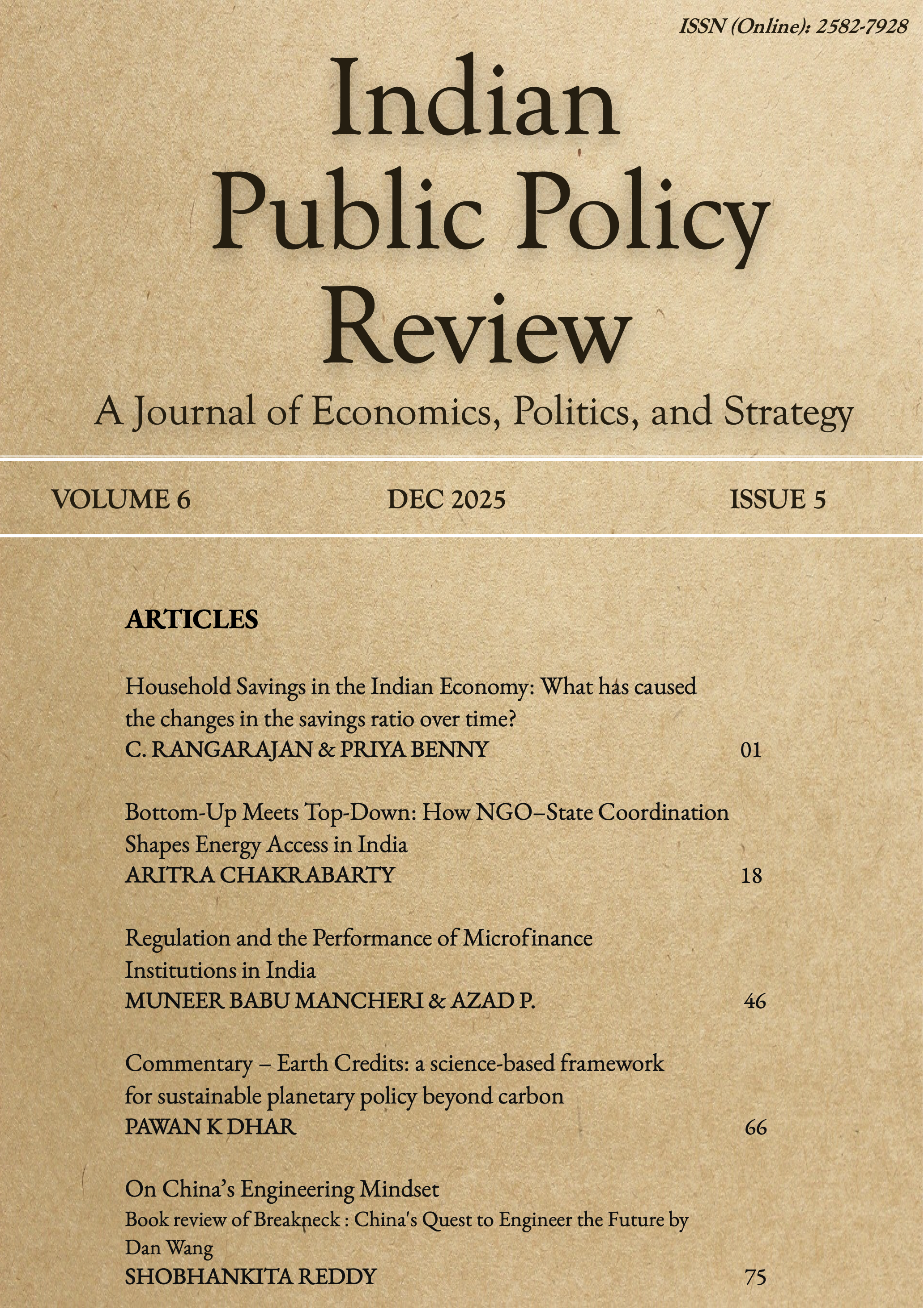Current Issue

In the December issue of IPPR, C. Rangarajan and Priya Benny identify four structural breaks in India’s household savings rate from 1950–51 to 2022–23 and conclude that the recent decline in household savings is a matter of concern that will require adjustments to the public sector’s borrowing programme. Aritra Chakrabarty’s paper examines how NGO–state coordination shapes vertical and horizontal governance arrangements for rural energy access in India and proposes ways to achieve more equitable electricity provision. Muneer Babu Mancheri and Azad P’s study finds that RBI regulation positively impacts operational self-sufficiency and breadth of outreach while reducing average loan sizes, thereby helping balance financial sustainability with enhanced consumer protection in the microfinance sector. Pawan K Dhar proposes an Earth Credits Framework as a unified accounting system that extends beyond carbon credits to quantify a project's total planetary consumption across all nine planetary boundaries. Finally, Shobhankita Reddy reviews “Breakneck : China's Quest to Engineer the Future” by Dan Wang, which examines the contrast between China's "engineering state" and America's "lawyerly society".

